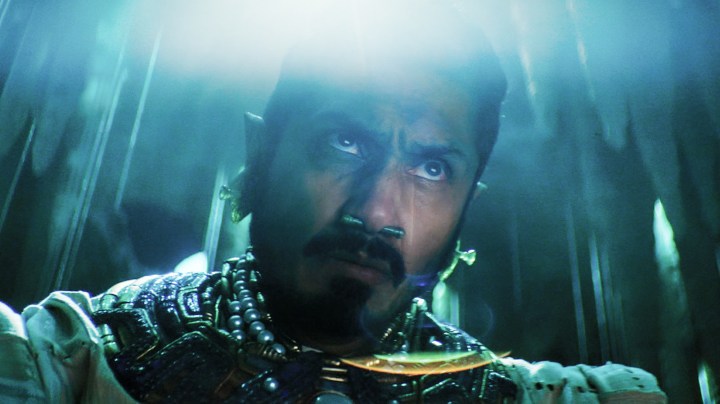‘Wakanda Forever’ Cinematographer Talks About the Key Component to Bringing Talokan to Life

Courtesy of Youtube/Marvel
Autumn Durald Arkapaw (Loki), the cinematographer behind the sequel Black Panther: Wakanda Forever, knew exactly the kind of look she wanted to give the underwater kingdom of Talokan when cameras started rolling. For her, it was all about creating tension within a dark world.
“It was very important to [director] Ryan [Coogler] to have a deep space movie underwater,” Arkapaw said at the EnergaCameriage Film Festival according to The Credits. “Things are dark. It creates more tension, they’re textural, there’s a lot of turbidity, the clarity’s off. When you make a decision like that, that’s brave; everyone has to be on the same page.”
Arkapaw said they “shot everything underwater” and used a dry-for-wet technique to “make something that was very beautiful and felt real – as real as it could with people walking and talking underwater.”
Dry-for-wet is a method of filming where filters and lighting effects are used to simulate a character being underwater. It’s been used in films like Guillermo del Toro’s Oscar-winning sci-fi drama The Shape of Water and Aquaman.
In fact, incorporating darkness into the entire movie was important to her and Coogler. They wanted a “texture of grief throughout the film.” Arkapaw cited two sci-fi classics as inspiration for her work – Ridley Scott’s 1979 sci-fi horror film Alien and James Cameron’s 1991 sci-fi action film Terminator 2: Judgement Day.
“With lighting, I tend to light moodier, and it was embraced here,” she said. “For me, light shouldn’t fall everywhere. A character should be coming in and out of light, like it happens in real life. And there’s so much texture and drama to a face, and if you just don’t shape it, then you don’t feel that emotion. So, I think it was just very important for this story.”
If Arkapaw’s goal was to add “drama to a face” through her lighting techniques, she succeeded. All audiences had to do was look at Namor (Tenoch Huerta) to see the nuances of his character through his intense glare.